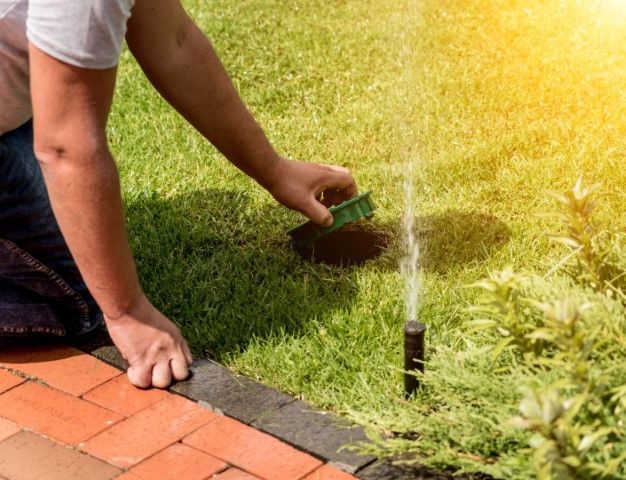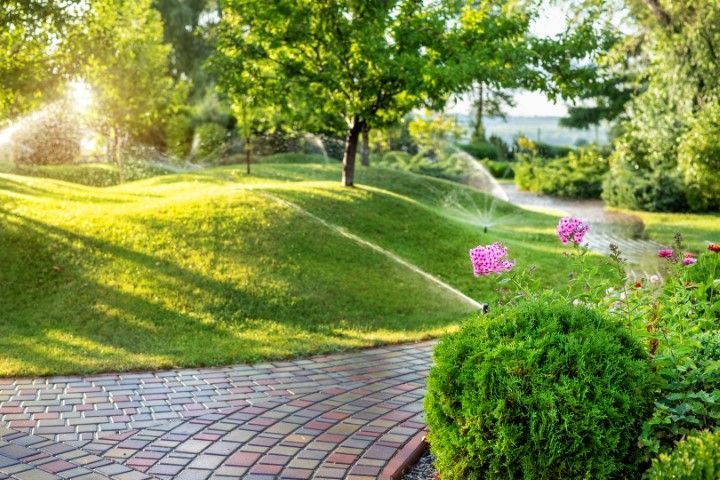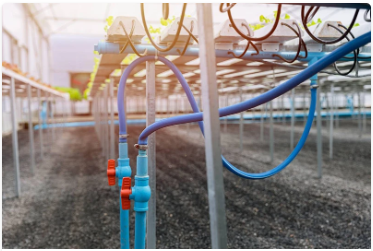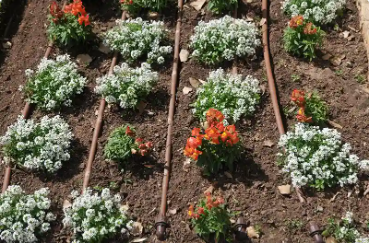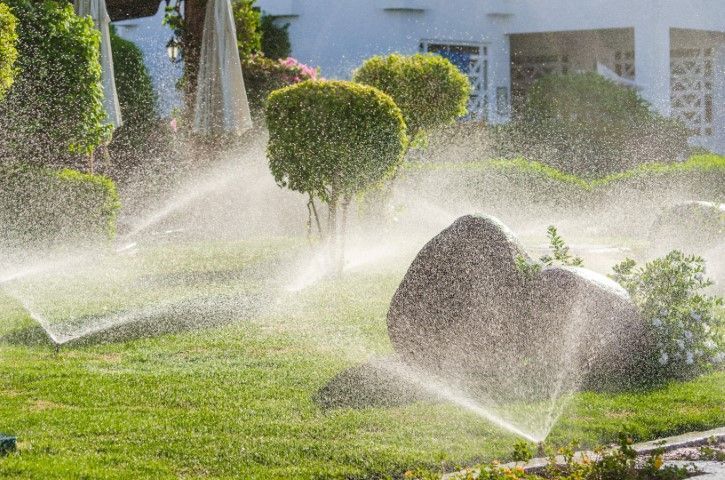Sprinkler System SOS: How to Troubleshoot and Repair Common Issues Like a Pro
Sprinkler System SOS: How to Troubleshoot and Repair Common Issues Like a Pro
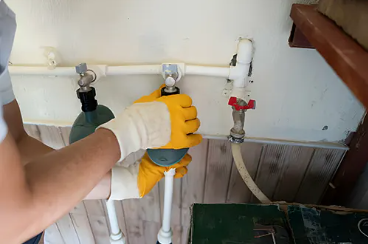
A well-functioning sprinkler system is an asset to any household or business, ensuring that lawns and landscapes remain vibrant and healthy. However, numerous issues can hinder the performance of these intricate systems – from clogged nozzles and control valve failures to improper spray patterns and pressure problems.
While professional service is always an option, understanding the basics of troubleshooting and repair can save both time and money. This discourse seeks to equip you with the knowledge and skills to identify, analyze, and fix the most common sprinkler system malfunctions. By mastering these aspects, you will be well on your way to maintaining your sprinkler system like a pro.
But the question remains: are you ready to take control of your sprinkler system’s health?
Understanding Your Sprinkler System
To efficiently troubleshoot any issues, it is fundamental to have an in-depth understanding of your sprinkler system’s components and their respective functionalities. The primary elements of the system include the controller, valves, sprinkler heads, and pipes. The controller is the brain of the operation, regulating the timing and duration of water distribution. The valves control the water flow, while the sprinkler heads determine the pattern and extent of irrigation. The pipes, on the other hand, provide a pathway for the water.
Understanding the intricacies of these components will empower you to identify potential sources of problems. For instance, if the system is not activating, the issue may lie with the controller. On the contrary, if there is uneven watering, the sprinkler heads could be the culprits. Additionally, visible leaks or soggy spots in your lawn may indicate damaged pipes or malfunctioning valves.
Hence, knowledge of your sprinkler system’s components and their functionalities is a prerequisite to effective troubleshooting. This understanding not only aids in diagnosing issues but also in implementing appropriate and efficient solutions.
Common Issues With Sprinkler Systems
Drawing on our understanding of the system’s components, we can now explore the common issues that often afflict sprinkler systems.
A prevalent problem is clogged nozzles, which can occur due to dirt, grass clippings, or other debris. This obstruction can affect the water flow, leading to uneven irrigation.
Another common issue is a broken sprinkler head, which can happen due to lawn mower accidents or wear and tear over time. This can result in water wastage and inadequate watering of your lawn.
The controller malfunction is another typical problem. It could be due to a power outage, faulty wiring, or an incorrect schedule setting, causing your sprinklers to not turn on or off as intended.
Furthermore, the system pressure can be either too low or too high. Low pressure can prevent water from being distributed evenly, while high pressure can cause damage to the sprinkler heads and pipes.
Lastly, leaks in the system, either from the sprinkler heads or the pipes, are a common issue. They can lead to water waste, higher water bills, and ineffective watering. Recognizing these issues promptly and addressing them can ensure the longevity and efficiency of your sprinkler system.
Troubleshooting Techniques for Sprinkler Problems
How can you effectively troubleshoot these common sprinkler system issues to ensure optimal function and longevity? The first step is to diagnose the problem. Watch for irregularities such as uneven watering, leaky valves, or a system that won’t turn on or off correctly.
Next, isolate the issue. For instance, if the sprinkler heads aren’t popping up, it may be due to low water pressure, or they might be clogged or damaged. If the system isn’t turning on, check the controller. Make sure it’s plugged in, the fuse isn’t blown, and the programming is correct.
For leaky valves, assess whether it’s due to debris in the diaphragm, a worn-out solenoid, or a broken valve. Each problem requires a different repair, so precise identification is key.
Once the issue is determined, repair or replace parts as necessary. Keep in mind that sometimes it’s cheaper and less time-consuming to replace rather than repair. Finally, test the system to ensure it’s working properly.
Remember that routine maintenance can prevent many issues. Clean and adjust heads annually, replace old parts, and ensure the controller is correctly set. This proactive approach can save time, money, and water in the long run.
Step-by-Step Guide to Sprinkler Repairs
Addressing the need for sprinkler repairs, a step-by-step approach can significantly simplify the process and ensure effective results.
The first step is to identify the problem. Issues can range from clogged nozzles and defective valves to broken pipes or misaligned sprinkler heads. Once the problem has been identified, the next step is to turn off the water supply to the sprinkler system to prevent further damage.
If the issue lies with a clogged nozzle, remove the sprinkler head and clean it thoroughly, taking care not to damage the nozzle. For a defective valve, replacement is often the most effective solution. Remember to choose a valve that matches your system’s specifications.
In case of a broken pipe, dig around the pipe carefully to avoid causing more damage. Cut the damaged section of the pipe and replace it with a new one, ensuring the joints are sealed properly.
Misaligned sprinkler heads can usually be adjusted manually. If the head is damaged, however, it may need replacement.
Pro Tips for Maintaining Your Sprinkler
While effective repairs are crucial in ensuring the longevity of your sprinkler system, adopting proactive maintenance strategies can prevent many common issues from arising in the first place. Regular check-ups help to identify minor problems before they escalate, saving you both time and money.
Start by inspecting the sprinkler heads regularly for damage or blockage. Debris such as dirt, grass clippings, or leaves can affect the water flow, reducing the efficiency of your sprinkler system. Regularly clean and, if necessary, replace the heads to ensure optimal performance.
Next, ensure the sprinkler system’s pressure is set correctly. Over-pressurization can lead to leaks, wasted water, and even damage to your lawn. It’s advisable to invest in a pressure gauge to monitor this.
Lastly, pay attention to the programming of your sprinkler system. Overwatering not only wastes water but can also harm your plants. Adjust the programming according to the season and weather forecast. In the rainy season, for example, you can reduce the watering frequency.
Conclusion
In conclusion, understanding the workings of a sprinkler system, recognizing common issues, and acquiring knowledge about troubleshooting techniques are essential for effective sprinkler repair.
Following a step-by-step repair guide can yield successful outcomes.
Furthermore, implementing professional maintenance tips can prevent future issues, ensuring the longevity of the sprinkler system.
Thus, with the right knowledge and tools, one can professionally handle most common sprinkler system issues.
- Avoid These 5 Common Irrigation Blunders Every Homeowner Makes
- Your Go-To Guide for Picking the Perfect Sprinkler System for a Lush Lawn: Handy Tips and Tricks
- Impact of Climate on Irrigation System Design and Operation
- The Role of Soil Moisture Sensors in Irrigation Efficiency
- Cost-Effective Irrigation Solutions for Small Gardens
